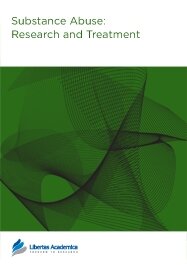

Publication Date: 18 Mar 2009
Journal: Substance Abuse: Research and Treatment
Citation: Substance Abuse: Research and Treatment 2009:3 31-39

Caroline L. Strasinger1, Nicole N. Scheff1, Ji Wu2, Bruce J. Hinds2 and Audra L. Stinchcomb1
1Department of Pharmaceutical Sciences, University of Kentucky, Lexington, KY, U.S.A. 2Department of Chemical and Materials Engineering, University of Kentucky, Lexington, KY, U.S.A.
Abstract
Transdermal systems are attractive methods of drug administration specifically when treating patients for drug addiction. Current systems however are deficient in therapies that allow variable flux values of drug, such as nicotine for smoking cessation or complex dosing regimens using clonidine when treating opioid withdrawal symptoms. Through the use of functionalized carbon nanotube (CNT) membranes, drug delivery to the skin can be controlled by applying a small electrical bias to create a programmable drug delivery system. Clearly, a transdermal patch system that can be tailored to an individual’s needs will increase patient compliance as well as provide much more efficient therapy. The purpose of this paper is to discuss the applicability of using carbon nanotube membranes in transdermal systems for treatment of drug abuse.
PDF (961.66 KB PDF FORMAT)
RIS citation (ENDNOTE, REFERENCE MANAGER, PROCITE, REFWORKS)
BibTex citation (BIBDESK, LATEX)

This is the first time we published an article in Substance Abuse: Research and Treatment, and we were pleased to find that the publishing staff were extremely helpful in guiding our submission through all the hoops. More important they answered our concerns without delay and where necessary made changes in the page proofs in accord with our wishes. I have published upwards of 80 or 90 articles, chapters and edited volumes, and I have ...

All authors are surveyed after their articles are published. Authors are asked to rate their experience in a variety of areas, and their responses help us to monitor our performance. Presented here are their responses in some key areas. No 'poor' or 'very poor' responses were received; these are represented in the 'other' category.See Our Results
Copyright © 2013 Libertas Academica Ltd (except open access articles and accompanying metadata and supplementary files.)
Facebook Google+ Twitter
Pinterest Tumblr YouTube